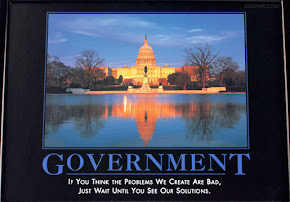It appears that the EPA believes that the technology will be available in 10 years that will allow new coal plants to be built. This must make the people of WV very happy.
Excerpt: The Environmental Protection Agency's proposal would effectively stop the building of most new coal-fired plants in an industry that is moving rapidly to more natural gas. But the rules will not regulate existing power plants, the source of one third of U.S. emissions, and will not apply to any plants that start construction over the next 12 months.
The watering down of the proposal led some ardent environmentalists to criticize its loopholes, but a power company that has taken steps to cut emissions praised the rules.
While the proposal does not dictate which fuels a plant can burn, it requires any new coal plants to use costly technology to capture and store the emissions underground. Any new coal-fired plants would have to halve carbon dioxide emissions to match those of gas plants.
"We're putting in place a standard that relies on the use of clean, American made technology to tackle a challenge that we can't leave to our kids and grandkids," EPA Administrator Lisa Jackson told reporters in a teleconference.
Jackson could not say whether the standards, which will go through a public comment period, would be finalized before the November 6 election. If they are not, they could be more easily overturned if Obama lost.
Republicans say a slew of EPA clean air measures will drive up power costs but have had little success in trying to stop them in Congress. Industries have turned to the courts to slow down the EPA's program.
Some Democrats from energy-intensive states also complained. "The overreaching that EPA continues to do is going to create a tremendous burden and hardship on the families and people of America," said Senator Joe Manchin, a Democrat from West Virginia.
REGULATORY CERTAINTY
The EPA's overall clean-air efforts have divided the power industry between companies that have moved toward cleaner energy, such as Exelon and NextEra, and those that generate most of their power from coal, such as Southern Co and American Electric Power.
Ralph Izzo, the chairman and CEO of PSEG, a utility that has invested in cleaner burning energy, said the rules provide a logical framework to confront the emissions. The rules provide the industry with "much needed regulatory certainty," that is needed to help guide future multi-billion dollar investments in the U.S. power grid, he added.
Under the new standards, coal plants could add equipment to capture and bury underground for permanent storage their carbon emissions. The rules give utilities time to get those systems running, by requiring they average the emissions cuts over 30 years. Still, the coal-burning industry says that carbon capture and storage, known as CCS, is not yet commercially available.
Jackson said the EPA believes the technology will be ready soon. "Every model that we've seen shows that technology as it develops will become commercially available certainly within the next 10 years".
The National Mining Association said the rules can only hurt industry. "This proposal is the latest convoy in EPA's regulatory train wreck that is rolling across America, crushing jobs and arresting our economic recovery at every stop
The portion of U.S. electricity fired by coal has slipped from about 50 percent to 45 percent in the last few years as hydraulic fracturing, or fracking, and other drilling techniques have allowed access to vast new U.S. natural gas supplies.
Read full Reuters report here.































No comments:
Post a Comment